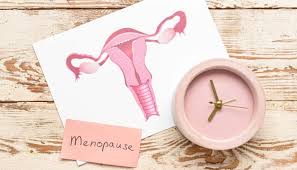Stroke survivors facing walking difficulties may find renewed hope in a groundbreaking robotic hip exoskeleton developed by researchers at the University of Massachusetts Amherst. More than just a tool, this innovative device could revolutionize stroke recovery by offering a practical and accessible method to improve walking function and enhance quality of life.
Published in IEEE Transactions on Neural Systems and Rehabilitation Engineering, the study unveils the potential of the robotic exoskeleton to address walking asymmetry commonly experienced by stroke survivors. Unlike traditional treadmill-based training methods, this novel approach aims to translate rehabilitation gains into real-world contexts, ultimately empowering individuals to regain independence in their daily lives.
The inspiration for the robotic exoskeleton stems from split-belt treadmills, which manipulate walking speed to exaggerate asymmetry and encourage neurological adaptation. However, treadmill training has limitations, as what is learned on the treadmill does not always transfer to overground walking.
“Our focus is to develop methods of gait rehabilitation that translate to functional improvements in real-world contexts,” explains Meghan Huber, assistant professor of mechanical and industrial engineering and senior author of the study.
The UMass team devised a portable exoskeleton that applies resistive forces to one hip joint and assistive forces to the other, mimicking the effects of split-belt treadmill training in neurologically intact individuals. This proof-of-concept study demonstrates the exoskeleton’s ability to modify gait asymmetry, laying the groundwork for future research in overground contexts.
“With this device, we can enhance the accessibility of gait training and transfer training benefits into everyday walking contexts,” says Mark Price, a postdoctoral researcher involved in the study.
One of the key advantages of the robotic exoskeleton is its portability, allowing for seamless integration into stroke survivors’ daily lives. Whether used during overground walking or early intervention in hospitals, this device offers a practical solution to increase training time and improve functional outcomes.
“This portable exoskeleton offers numerous clinical benefits, providing stroke survivors with an accessible way to enhance their walking ability,” says Banu Abdikadirova, lead author of the study.
The development of the robotic hip exoskeleton underscores the collaborative efforts of researchers from diverse backgrounds within the Human Robot Systems Lab and the Integrative Locomotion Lab at UMass Amherst.
“It is inspiring to witness the innovations that emerge when individuals from diverse backgrounds unite under a shared mission,” remarks Huber. “Through cross-disciplinary research, we can engineer technologies that have a meaningful impact on people’s lives.”
As the team prepares to expand their research to include stroke survivors and measure neural changes induced by the exoskeleton, there is newfound optimism for the future of stroke rehabilitation. With continued advancements in robotic technology, stroke survivors may soon experience greater mobility and independence, paving the way for enhanced quality of life.












